Proud
pilots
photographed
professionally –
– pictures
preserved
in perpetuity?
(Possibly. (Possibly.))
A particular aspect of this blog being historical photography, one of my first posts – Five Pilots in December: Photographic Portraits of American Fighter Pilots Who Lost Their Lives at Pearl Harbor – dating from November of 2016 (gadzooks, has it been that long?!) focused (* no pun intended *) on photographic portraits of Army Air Corps pursuit pilots Samuel W. Bishop, Hans C. Christiansen, John L. Dains, Gordon H. Sterling, Jr., and George A. Whiteman. The five images featured in that post are among the many, many such images in the collection Photographic Prints of Air Cadets and Officers, Air Crew, and Notables in the History of Aviation – NARA RG 18-PU, at the United States National Archives.
Though the overwhelming majority of these portraits and images in that collection directly pertain to members of the United States Army Air Service, the United States Army Air Corps, and its successor, the United States Army Air Forces, a few of these images are of personalities in aviation history who are either American civilians, or (even fewer in number) citizens of other countries, who had interaction with or relation to American aviation, or who were simply prominent in the field of aeronautics, per se. As such, “this” post displays images of the following aviators: First Lieutenant Paul F. Baer, Marshal Italo Balbo, Anthony Fokker, Major Ployer P. Hill, Ruth R. Nichols and Amelia Earhart, Philip A.G.D. Sassoon, and Lawrence B. Sperry. More such posts will follow.
Given the prominence of these individual in the field of aviation – let alone history in general for Fokker and Earhart – and the abundance of information about them, I’ve decided not to “reinvent the wheel” and write lengthy essays about them, recreating what’s been written previously. Rather, each image is simply followed by links to relevant sources of information. These references are primarily Wikipedia (yeah, I know, I know … it’s Wikipedia, but still, you can find valid information there) and FindAGrave, the latter site often featuring valuable genealogical information and photos. The photographs of Frank F. Baer and Ployer P. Hill are supplemented by images of newspaper articles, while the portraits of Balbo, Nichols, and Sassoon feature videos.
I hope you find these images interesting.
More to follow!
____________________________________
First Lieutenant Paul Frank Baer
“American World War I flying ace credited with nine confirmed victories and seven unconfirmed victory claims. He was the first ace flying for [specifically] American military aviation. He also scored the initial victory for an American military unit.”
____________________
Here’s a document about Paul Baer’s military training and service in the Service Aéronautique of the French Army during World War I. The document can be found at the Database of Military aircraft personnel for WW I, within the Database of navigators and ground personnel of the air force during the Great War, of the SGA (Secretary General for Administration), at – Mémoire des hommes – Portail Culturel du Ministere Des Armees. (“Memory of men – Cultural Portal of the Ministry of the Armed Forces”).
The Illustrated Daily News
September 27, 1919
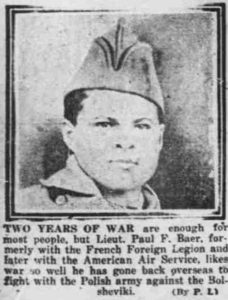
____________________
Body of Ft. Wayne War Ace Arrives Home From China
The Muncie Morning Star
December 31, 1930
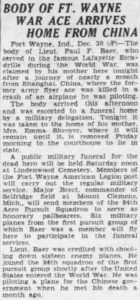
____________________
Bury World War Ace at Ft. Wayne Today
The Muncie Morning Star
January 3, 1931
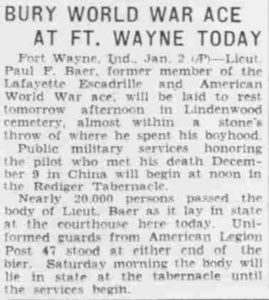
____________________
Last Rites for American Pilot This Afternoon
Following Services At Chapel Body Starts Journey to France
The China Press
December 11, 1930
Full military honors will be paid today at 3 p.m. to Pilot Paul F Baer, American aviator and a distinguished member of the famous Lafayette Esquadrille, who met his untimely death Tuesday morning when the Hankow plane of the China National Aviation Corporation crashed into the mast of a junk.
Shanghai military units will say their last goodbye to an honorary soldier in the form of guard of honor contingent of French troops, ordered out of the French commandant delegation from the Royal Air Force Association and the American Legion.
The body is now lying in state, draped with the flags of three nations, at the International Funeral Directors’ Establishment, 71 Kiaochow road.
High officials of foreign and native military forces will pay their last respects to the gallant aviator this afternoon. After the funeral the body will be taken aboard the President McKinley, which will convey Pilot Baer on the first leg of his journey to his last resting place.
LAST RESTING PLACE
The body will be taken to Fort Wayne, Ind., where friends and relatives will pay respects before it travels to Versailles near Paris. There the Lafayette Memorial will lay claim to Pilot Baer, wherein a permanent niche has been awaiting him since his release from the Lafayette Esquadrille. The Memorial has a tomb for every member of the Esquadrille, and only a few of these still remain unoccupied. One of the surviving members of the famous fighting group. Mr. Bert Hall, author of the book “One Man’s War,” is in Shanghai at present.
Baer, ranking No. 4 in the Esquadrille, was showered with all the honors the French Government could confer upon him. He was also decorated by the United States. The aviator possessed the Distinguished Service Cross, with Bronze Oak Leaf; Legion d’Honneur, and Croix de Guerre with seven Palms.
Pilot Baer, a daring and fearless fighter, was born in Fort Wayne, Indiana. He was commissioned First Lieutenant in United States Aviation, November 5, 1917, and was soaring over the roaring cannon at the front from February 18 to May 22, 1918, flying for the 103rd Pursuit Squadron. On May 22 he was shot down and wounded in combat, and from that time was held a prisoner in Germany until the Armistice was signed.
FLEW SPAD 80
Enlisting in the French Aviation Service February 20, 1917, Baer was in the French aviation schools until August 12 of that year, when he was given a Spad 80 and started his maneuvers at the front. He fought for the French until January 14, 1918, and during that time brought down nine enemy planes. Baer showed such daring and skill in all his combats that France conferred numerous honors upon him.
During his service in United States Aviation at the front, the D.S.C. was given him by command of General Pershing, for bravery in March, 1918.
Baer, alone attacked a group of seven enemy pursuit machines, destroying one which crashed to the ground near the French lines.
____________________
Impressive Tribute Paid Distinguished Airman In Military Rite Yesterday
United States Marines Present For Funeral Of Pilot Paul F. Baer, Victim Of Air Crash Here On Tuesday
The China Press
December 12, 1930
In a simple but impressive manner Shanghai yesterday paid a final tribute to the distinguished airman, Pilot Paul F. Baer, American aviator and ranking member of the famous Lafayette Esquadrille, who crashed to his death here Tuesday morning when the Hankow plane of the China National Aviation Company failed to gain altitude and was cracked up.
Funeral services for the ill-fated aviator, at the International Funeral Directors were attended by [company] of United States Marines as well as numerous French officials. The Rev. Emory Luccock was the minister in charge.
Following the playing of “Nearer My God to Thee,” by the military band. Rev. Luccock delivered a brief euology over the bier. Three volleys from the firing squad followed. “Lead Kindly Light” was the second and final rendition by the band.
FLYER BEARERS
Pall bearers were made up entirely of fellow airman including Mr. Bert Hall, one of the few surviving members of the famous French squadron. The others, all of the China National Aviation Company, are: M.S. Halin, H.G. Smith, M. Hamilton, James Hayden and M. Hamill. Captain Lawson was in command of the marine company.
Although little information is available here concerning Baer’s relatives, he is believed to be survived only by his mother, Mrs. Emma Shroyer of Fort Wayne, Indiana.
The casket was draped with an American flag on all sides by numerous floral wreaths. Indicating high regard on the part of his flying colleagues, many of these came from those who had soared through the clouds with Pilot Baer. Included among the large wreaths were those from the Pilots of the China National Aviation Company, the Mechanics of the C.N.A.C., the Royal Air Force of China, United Services Association of the Great War.
TO FRANCE
From the funeral parlor the body of Pilot Baer was removed late yesterday to be placed aboard the President McKinley, which will convey the airman on the first leg of his last journey. The body will be taken to Fort Wayne, Ind., where relatives and friends will pay respects before it is carried on to Versailles, France. There Pilot Baer will find his final resting place in the Lafayette Memorial, where a niche has been reserved for him as a result of his distinguished war service. The Memorial has a tomb for every member of the Esquadrille.
During and after hostilities in the Great War, Pilot Baer was showered with honors by both America and France. High decorations came from both governments including the Distinguished Service Cross, with Bronze Oak Leaf, the Legion of Honor and the Croix de Guerre, with seven palms. He ranked No. 4 in the Lafayette Esquadrille.
Following his services with the French, Pilot Baer fought with the American air forces on the Western Front. He was awarded the D.S.C. by command of General Pershing, for bravery in March, 1918. He attacked a group of enemy planes while flying alone over the French lines. Fire from his guns brought down one of the German planes. On March 15, bare attacked two enemy planes, sending one of the pair to the ground in flames.
FROM FT. WAYNE
Baer was born in Fort Wayne, Indiana. He was commissioned First Lieutenant in the U.S. Air Force, November 5, 1917, and by the following February he was in the thick of the fighting in France as a member of the 103rd Pursuit Squadron. On May 22, 1918 he was shot down and wounded during combat. From that time on until the Armistice was signed in November, he was a prisoner in Germany.
In addition to the wreaths from the close association of Pilot Baer were a large number bearing the names of prominent institutions and individuals. The complete list of wreaths which decked the casket follows: China National Aviation Company, Anciens Combattants Francais, United Services Association of the Great War (1914-1918), Royal Air Force Association of Shanghai, Association Nazionale Combattenti, Les Aviateurs Francaise de Shanghai, American Legion, Shanghai, General Frederick Townsend Ward Post No. 1, Pilots of the C.N.A.C., Mechanics of the C.N.A.C., Nan and Blanche, Officers and men of the 4th U.S. Marines, American Foreign Insurance Association, Standard Oil Company of New York, Amicale des Anciens Combattants Francaise, Douglas Jenkins, Mrs. Douglas Jenkins, H.B. Longfelloy, the S.E. Gale Company, The Staff of the Young Men’s Christian Association, Louis Ladow, Mr. and Mrs. E. Tollefsen, George Sellett, Mr. and Mrs. W.W. Ritchie, Alfred Pandely Patterson and numerous Chinese friends.
____________________
Paul F. Baer, at Wikipedia
Paul F. Baer, at FindAGrave
China National Aviation Corporation
Book: Hoosier Aviator Paul Baer: America’s First Combat Ace, by Tony Garel-Frantzen
________________________________________
Italy: Maresciallo dell’Aria (Marshal of the Air Force) Italo Balbo
“Italian fascist politician and Blackshirts’ leader who served as Italy’s Marshal of the Air Force, Governor-General of Libya and Commander-in-Chief of Italian North Africa. Described as the “heir apparent” to Italian dictator Benito Mussolini, often seen as one of his most probable successors.”
Note Marshall Balbo’s signature and salutation at bottom left.
Italo Balbo, at Wikipedia
Italo Balbo, at FindAGrave
Newspaper Clippings about Italo Balbo, in 20th Century Press Archives of the ZBW
Italian Air Armada Stirs New York Aka Balbo Arrives In New York (1933), at British Pathé YouYube Channel
________________________________________
The Netherlands: Anthony Gerard Fokker
“Dutch aviation pioneer, aviation entrepreneur, aircraft designer, and aircraft manufacturer. Most famous for the fighter aircraft he produced in Germany during the First World War such as the Eindecker monoplanes, the Dr.1 triplane and the D.VII biplane.”
Note that both of these images bear Anthony Fokker’s signature.
(Image 18-PU-137-1)
“Anthony G. Fokker in one of his airplanes about 1911-1912.” (Image 18-PU-137-2)
Anthony G. Fokker, at Wikipedia
Anthony G. Fokker, at FindAGrave
The National Aviation Hall of Fame
Newspaper Clippings about Anthony G. Fokker, in 20th Century Press Archives of the ZBW
At Oogle Books:
“Tony Fokker Wizard Of Flight“, Popular Science, May 1931
“Tony Fokker And The World War“, Popular Science, June 1931
“Tony Fokker Captures America“, Popular Science, July 1931
________________________________________
Major Ployer Peter Hill
“Pilot and an officer with a varied career, best known for his abilities as a test pilot. In an aviation career that spanned eighteen years, Hill piloted nearly 60 of the Army Air Corps’ newest aircraft, testing and evaluating their capabilities for service.”
____________________
Army Assignments
The Washington Post
May 29, 1925
____________________
Big Bomber Falls in Ohio, Killing 1
Major P.P. Hill Dies As the Boeing ‘Fortress’ Crashes at 200 Feet in Tests
The New York Times
October 31, 1935
____________________
Bomber’s Crash Laid to Locked Controls
Albuquerque Journal
November 13, 1935
____________________
Boeing Test Chief Dies Of His Injuries
Leslie Tower Was in Crash of Army Bomber on Experimental Flight at Dayton Oct. 30
The New York Times
November 20, 1935
Leslie Ralph Tower, at FindAGrave
Ployer P. Hill, at Wikipedia
Ployer P. Hill, at FindAGrave
Model 299 (NX13372) Crash, at National Museum of the United States Air Force
Model 299 (NX13372) Crash, at Aviation Safety.net
________________________________________
Ruth Rowland Nichols (and Amelia Mary Earhart)
“American aviation pioneer. The only woman yet to hold simultaneous world records for speed, altitude, and distance for a female pilot.”
“Miss Amelia Earhart Putnam and Miss Ruth Nichols. Taken at National Air Races – Los Angeles, Cal. July, 1933.” (Image 18-P-228, 267)
Ruth R. Nichols, at Wikipedia
Ruth R. Nichols, at FindAGrave
Ruth NIchols Home Movies 1935 – Women Pilots Ruth Elder Aviatrixes 70390 HD, at Periscope Film
Ruth Nichols reaches Valley Stream from Los Angeles in 13 hours and 22 minutes, at Critical Past
____________________
Amelia Mary Earhart
Amelia Earhart, at Wikipedia
This image of Amelia Earhart (28987AC) is dated July 30, 1936. The serial number of the Boeing P-12C behind Amelia, painted on the aircraft’s propeller blade, is 31-156. According to Aviation Archeology, this aircraft was assigned to first the 95th, and then the 43rd, Pursuit Squadrons, in which it was involved in landing accidents on December 24, 1930, and November 26, 1935, the pilots having been Carl B. Fry and Jerome E. Blair, Jr. (eventually Colonel Jerome Edward Blair, Jr.), respectively. The aircraft in the background is probably a Consolidated PB-2. (Image 18-P-228266)
________________________________________
England: Philip A.G.D. (Albert Gustave David) Sassoon
“Sir Philip Albert Gustave David Sassoon, 3rd Baronet, GBE, CMG (4 December 1888 – 3 June 1939). British politician, art collector, and social host, entertaining many celebrity guests at his homes, Port Lympne Mansion, Kent, and Trent Park, Hertfordshire, England. Secretary of State for Air, Sassoon was Honorary Air Commodore of No. 601 (County of London) Squadron. “
Philip A.G.D Sassoon, at Wikipedia
Philip A.G.D. Sassoon, at FindAGrave
Sir Philip Sassoon (1925), at British Pathé YouYube Channel
________________________________________
Lawrence Burst Sperry
“Third son of the gyrocompass co-inventor, Elmer Ambrose Sperry and his wife Zula. Sperry invented the first autopilot, which he demonstrated with startling success in France in 1914. Sperry is also credited with developing the artificial horizon still used on most aircraft in the early 21st century.” (Image 5913 AS)
Lawrence B. Sperry, at Wikipedia
Lawrence B. Sperry, at FindAGrave
Lawrence Sperry: Genius on Autopilot, at History.net
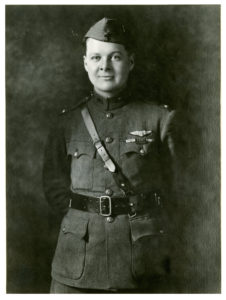
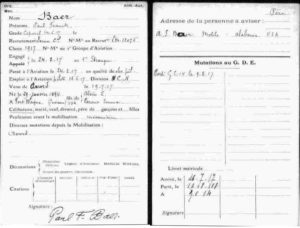
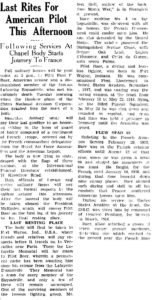
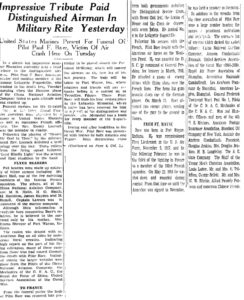
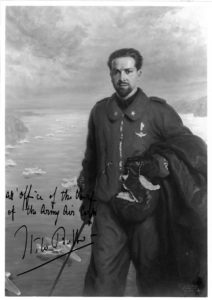
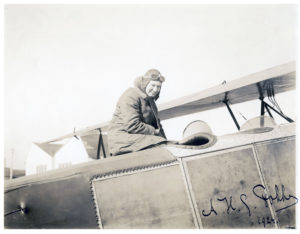
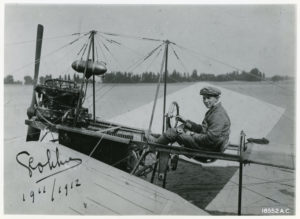
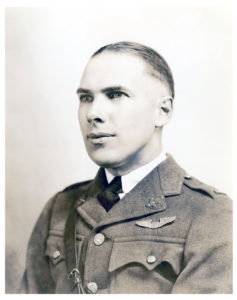
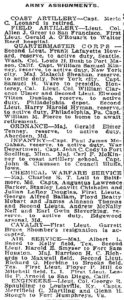

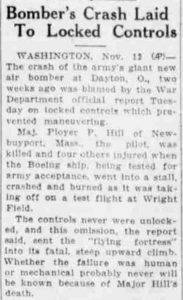
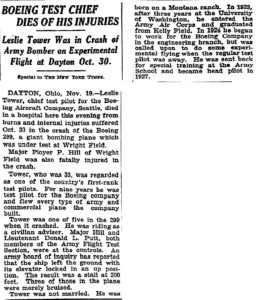
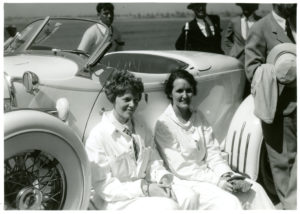
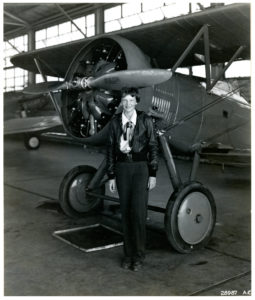
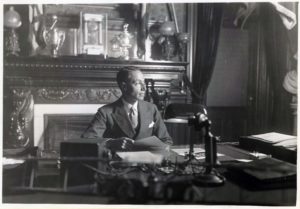
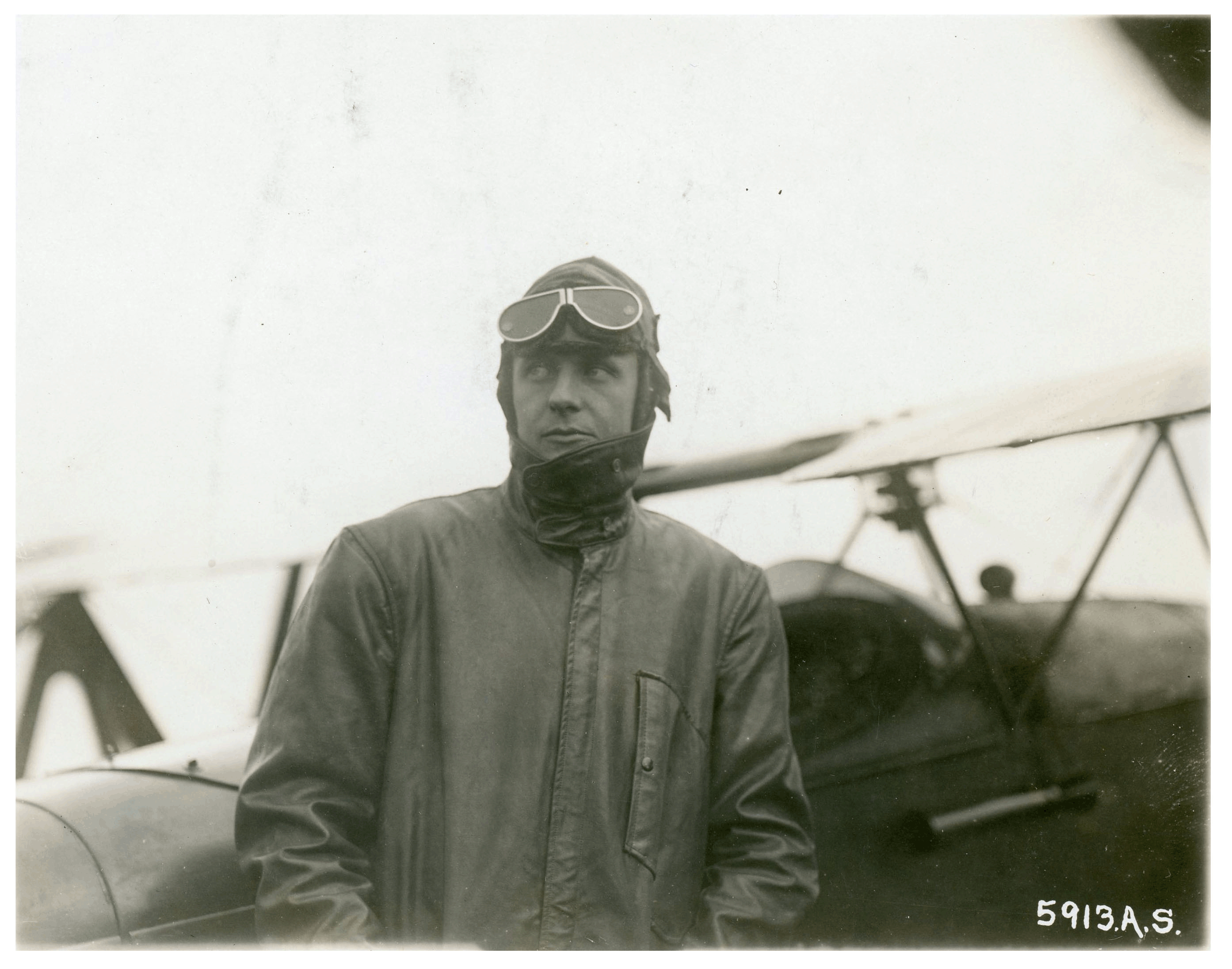
Deprecated: Function get_magic_quotes_gpc() is deprecated in /home3/emc2ftl3/public_html/wp-includes/formatting.php on line 4365
Deprecated: Function get_magic_quotes_gpc() is deprecated in /home3/emc2ftl3/public_html/wp-includes/formatting.php on line 4365
Deprecated: Function get_magic_quotes_gpc() is deprecated in /home3/emc2ftl3/public_html/wp-includes/formatting.php on line 4365